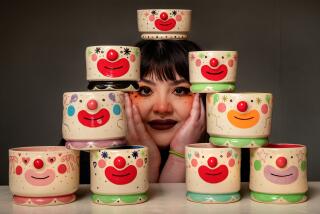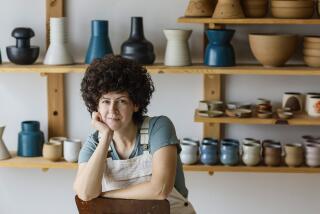Hungary Shares Herend Porcelain
Just about everybody thinks free trade with the former Communist Bloc is a swell idea, since it will not only help those beleaguered countries gain their financial footing, but also will allow us access to some really nifty fur hats.
Minnesotans, for instance, ought to rejoice, because one of those big fuzzy hats (with side flaps) will--I guarantee it--keep your head toasty even if youâre encased in a block of ice like a mastodon. They are the finest piece of cold-weather gear ever invented, bar none.
Apart from that, though, most people would be hard-pressed to come up with a gift wish list from the lands of our former heathen brethren. Fans of tractors might be pleased, and Russia and the Baltic States do grow a mean cucumber, but those items lack a certain panache as decorative stocking stuffers.
Thank goodness, then, for the new Hungary. The land that brought you goulash and sweet paprika now has brought you something nice and dramatic off of which to eat it.
Until relatively recently, Herend porcelain was a bit of an âinâ product on this side of the Atlantic, said April Ann Booth, a sales representative for the 166-year-old firm. While Hungary remained a part of the Eastern Bloc, and trade was severely restricted, only a small number of pieces each year found their way to collectors in the United States.
Advertising was nonexistent, and the reputation of the line spread by word-of-mouth. American customers routinely waited four years for delivery of ordered items.
Now, however, as Hungary moves toward a more capitalistic economy, Herend is beginning to appear--albeit on a limited basis--on store shelves here. And the wait for specifically ordered pieces has been cut to 18 to 24 months.
It is distinctive stuff, remarkable for its precision of line and design (even though every piece is handmade) and for the vivid colors in its hand-painted ornamentation. It also has a royal pedigree: At the 1851 Crystal Palace Fair in London, Queen Victoria ordered Herend dinner service decorated with a Chinese design of butterflies and flowers. That pattern is still produced.
In fact, every piece and pattern that Herend ever made is still available, Booth said. If, say, youâve broken the head off the blue tiger figurine thatâs been in the family since Uncle Zoltan spirited it out of Budapest in 1938, you can get a replacement--for $1,500.
Yes, itâs not cheap. And, Booth said, the determiner is the intricate hand-painting, which was demonstrated by Gyula Weber, one of 20 of Herendâs master painters, on Tuesday at Lucy Zahran in South Coast Plaza, Costa Mesa.
An appreciation of Weberâs work probably should start with an appreciation of physiology, specifically the difference between small- and large-muscle group coordination. Middle linebackers, for instance, who have wonderful large-muscle coordination, could have trouble painting the first battle of Bull Run on a garage door. Weber, who looks as if heâd have his hands full trying to tackle Little Lulu, could probably paint both Bull Run battles on a contact lens.
The powder paints, unconventional to those used to seeing tubes of oils or trays of watercolor paint, come from Germany and England. Mixed with oil on a small, square piece of glass, the paint is picked up on the tip of a pen with a nib so small as to be almost invisible. Weber uses this pen to paint--from the nose out--the distinctive crosshatch, or âfishnet,â pattern on the extensive line of Herend animal figurines.
The figurine collection is at times lifelike, at times highly stylized. And the $1,500 tiger is by no means on the low end. There is, in fact, a tiny, highly colored cat for $45.
A visual once-over of the entire line can overlook the fact that amid the ornate soup tureens, fish platters, casseroles and other gleaming white and brightly painted ancillary objects are four styles of tableware. Five-piece place settings are priced at $336 for the Queen Victoria pattern, $198 for the Blue Garland and Chinese Garland patterns and $282 for the Rothschild Bird pattern.
Itâs the Rothschild Bird pattern that provides us with the best Herend fun fact. According to Booth, Ross Perotâs recently married daughter, Carolyn, was registered with Herend for that pattern. But, Booth said, the image-conscious Perot âwanted to keep it quietâ for fear of offending voters who might object to the slightest whiff of non-domestic shopping in the family of a presidential contender.
No worries for Ross on that count now. Heck, if heâs got some campaign money left over, he could even get away with buying a fur hat.
More to Read
Sign up for Essential California
The most important California stories and recommendations in your inbox every morning.
You may occasionally receive promotional content from the Los Angeles Times.










